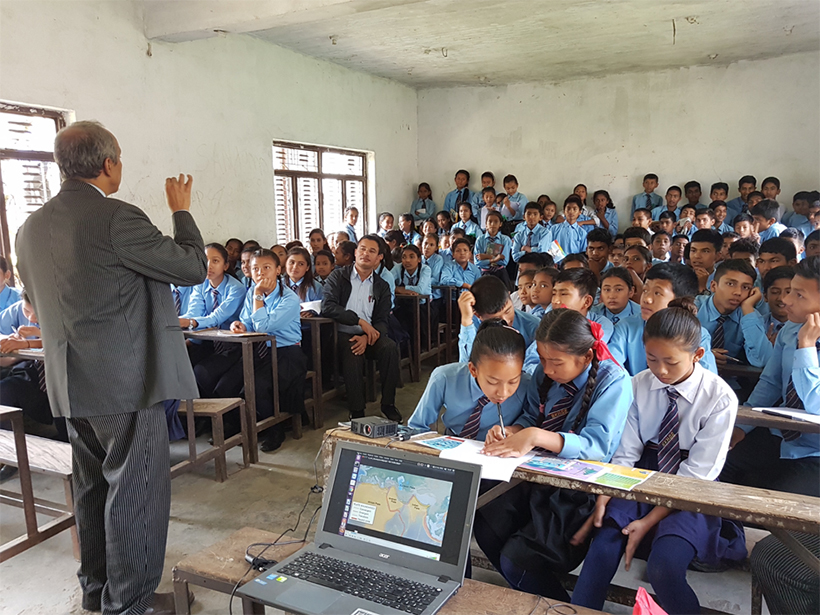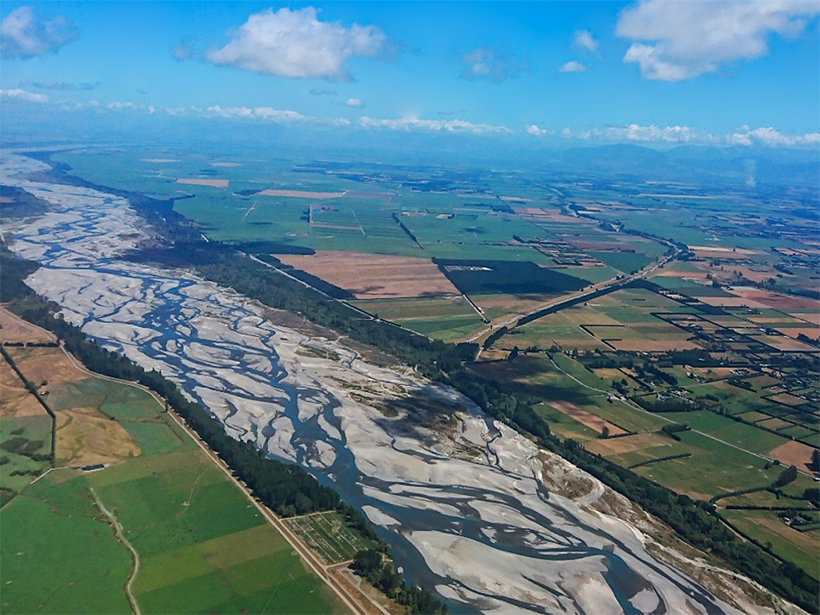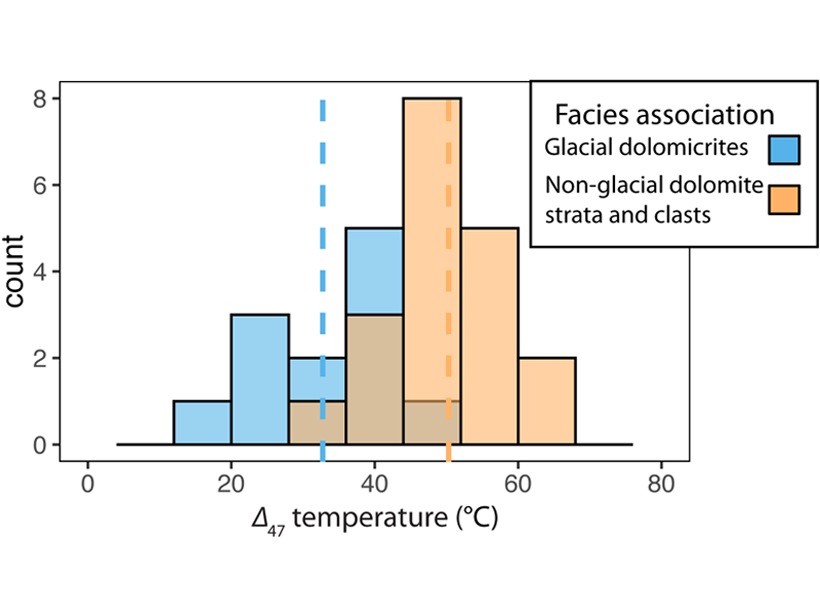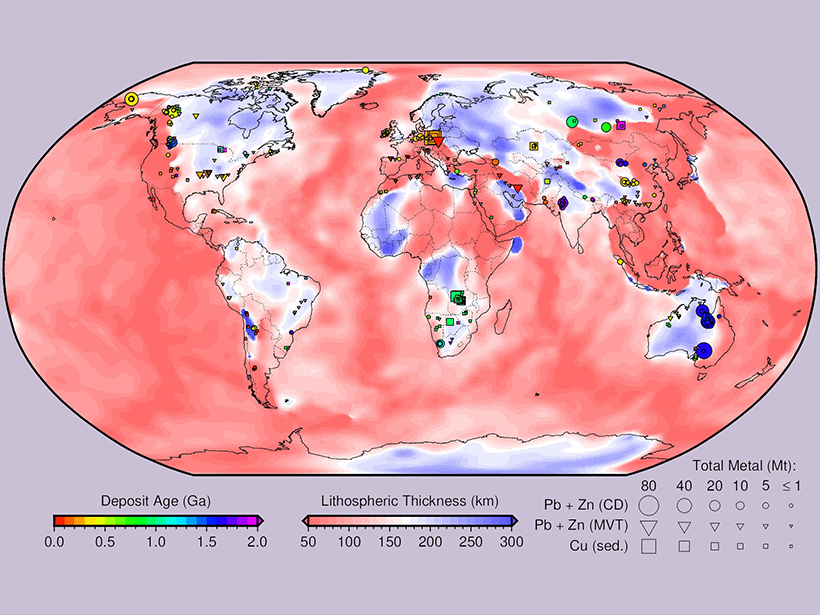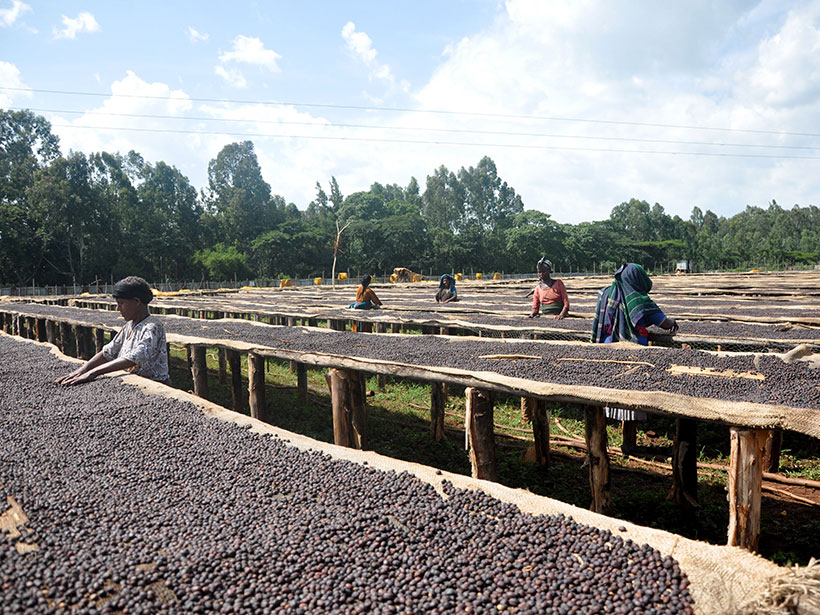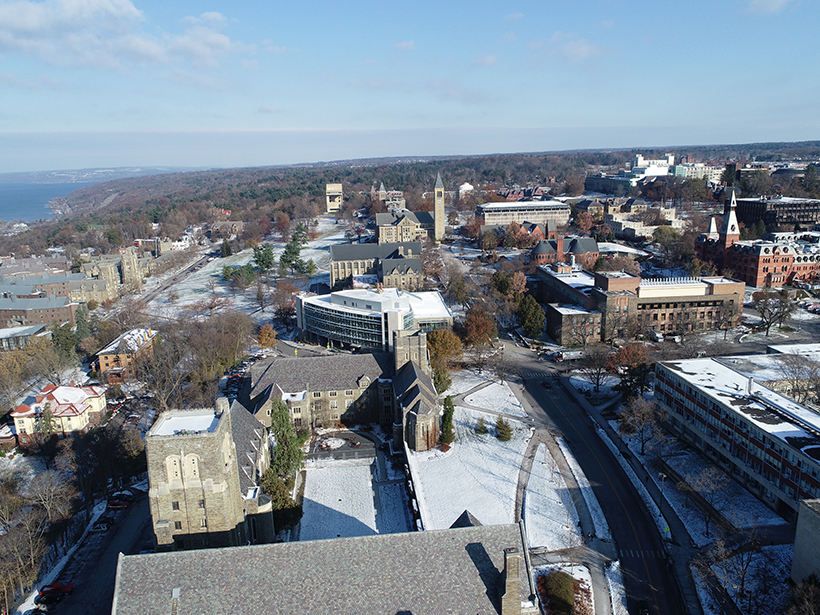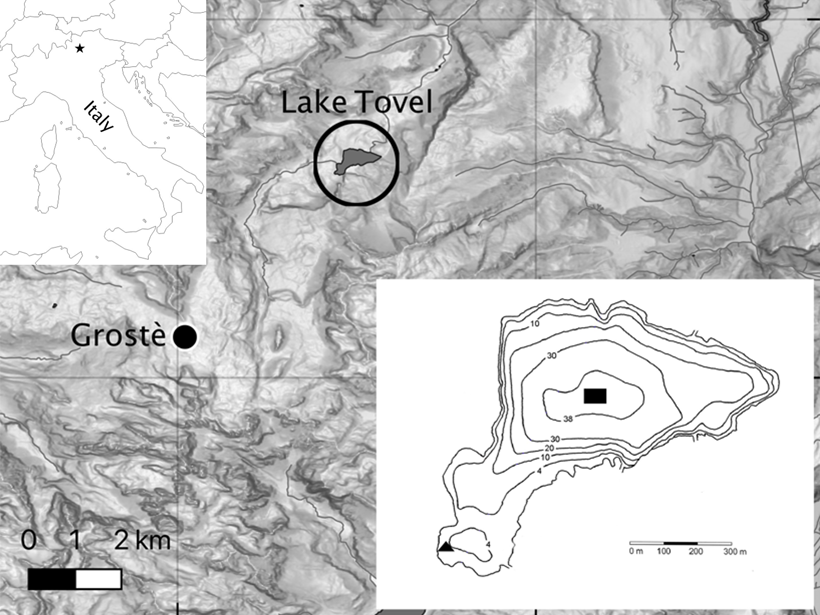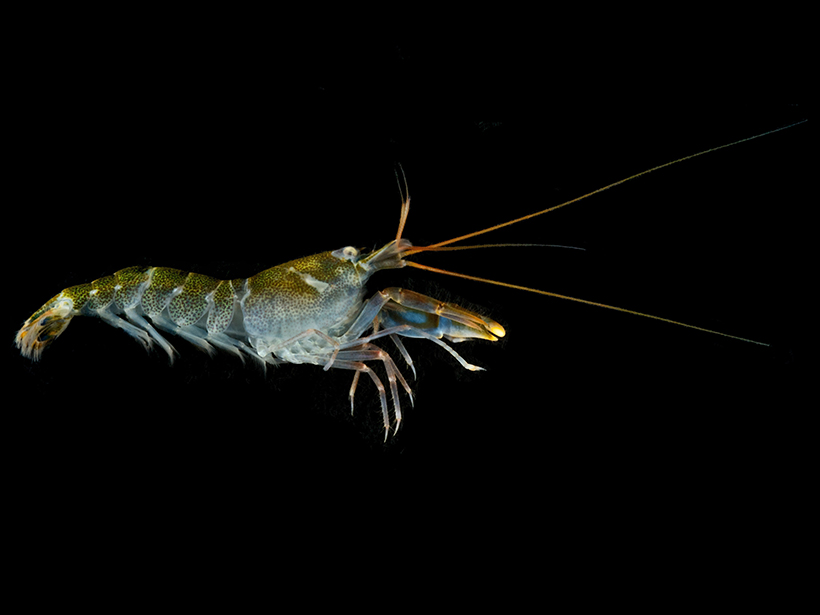El programa de Sismología en la Escuela en Nepal, tiene como objetivo preparar a las comunidades rurales para el próximo gran terremoto.
CC BY-NC-ND 2020
The River’s Lizard Tail: Braiding Indigenous Knowledges with Geomorphology
Indigenous Knowledges can be accurate, rigorous, and precise, say researchers in New Zealand, and they can help geomorphologists see landscapes in a new, richer way.
Measuring Paleoclimate During a Deep-Time Deep Freeze
New application of clumped-isotope thermometry to 700-Myr rocks documents large climate swings related to Snowball Earth glaciation and offers better understanding of an earlier Earth system.
Cratons Mark the Spot for Mineral Bonanzas
A new map of the thickness of Earth’s lithosphere contains clues to large deposits of key metals.
Ice from Above: Toward a Better Understanding of Hailstorms
Globally relevant and locally devastating, hailstorms produce significant societal impacts; despite this, our understanding of hailstorms and our ability to predict them is still limited.
Ethiopia’s Coffee-Growing Areas May Be Headed for the Hills
New research suggests climate change may radically redefine the regions best suited to grow one of Ethiopia’s most valuable crops.
Exploring by Boring: Geothermal Wells as Research Tools
As part of an effort to develop a geothermal energy source beneath its campus, Cornell University is planning to probe the “boring” old continental crust upon which many people live.
Climate Warming Improves Oxygen Mixing in a High-Altitude Lake
Long term weather and lake data from a high elevation lake in the Alps demonstrate that climate warming may actually improve the ability of high-altitude deep lakes to mix their waters.
Up Close with an Active Asteroid
A new journal special collection investigates the ejection of particles from the asteroid Bennu and the implications of these observations for asteroid science.
Camarones Chasqueadores Hacen Más Ruido en Aguas Cálidas
Conforme el océano se calienta debido al cambio climático, ruidos más fuertes podrían enmascarar los llamados de otros animales marinos usados para navegar, buscar alimento o pareja.

